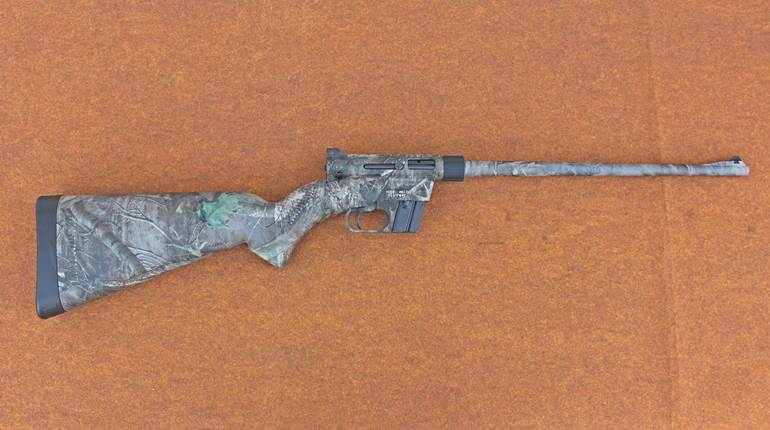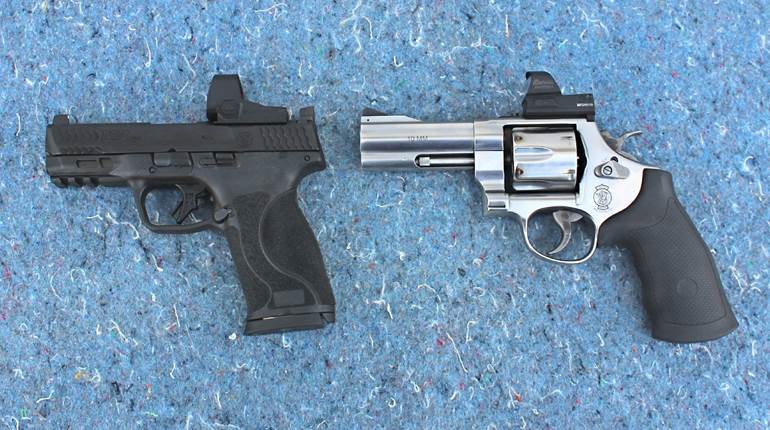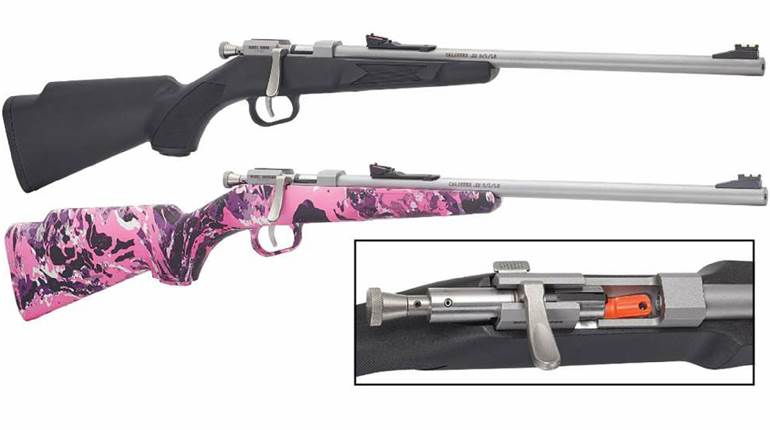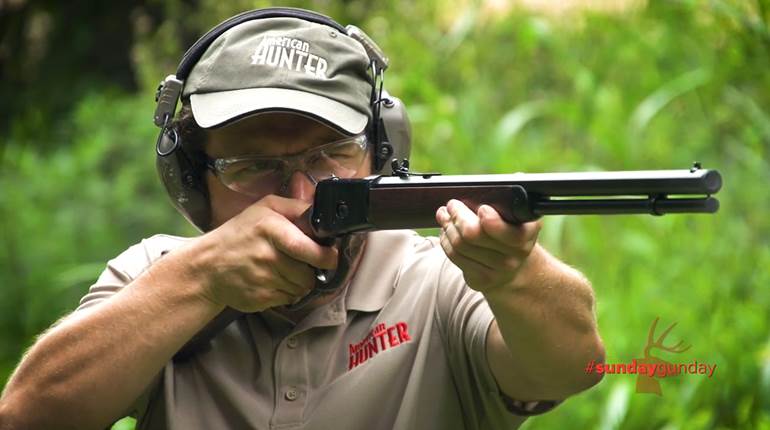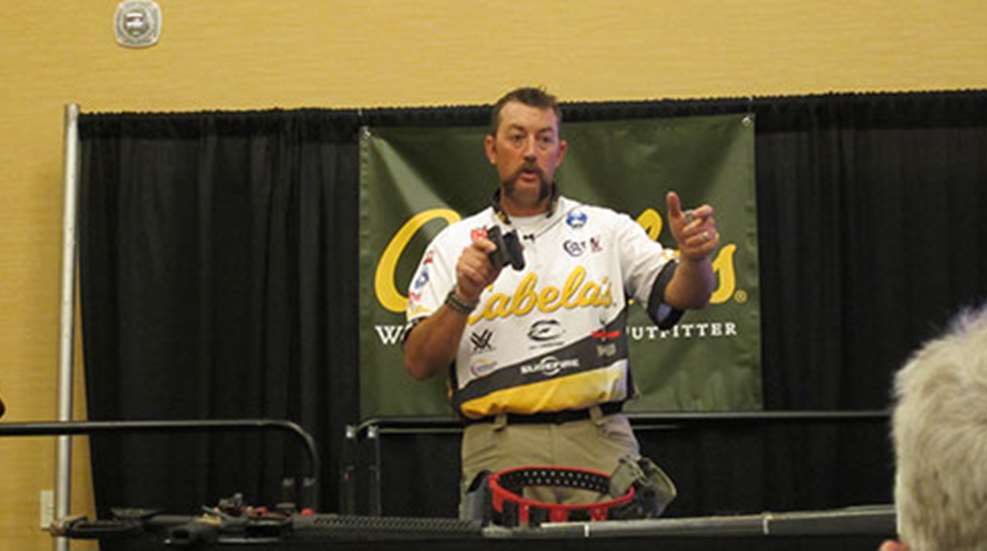
For NRA Annual Meeting attendees who have yet to set foot into one of the popular of 3-gun competitions, the 3-Gun 101 seminar was an opportunity to receive an introduction to this fast growing sport by the accomplished 3-Gun competitor Travis Gibson. Gibson recognizes that the sport can look intimidating to the uninitiated, so he spent the hour covering key factors of the sport, including shooting stage layouts, scoring, target types, and equipment requirements.
It’s called a 3-gun match because participates use a pistol, shotgun, and rifle in various combinations to complete each stage. The number and layout of the stages in a match change with each event. A one-day local or club match may have just 5 or 6 stages that the participants help to set up, while a National level match can span three days of shooting. Although the elements of the stages, such as target types, are common used and re-used, the stages on the whole are usually unique. Participants can plan to encounter a wide variety of still and moving targets that may require the use of all three gun types to complete just a single stage. These include paper targets, cardboard silhouettes, steel plates, and destructible targets like clay pigeons. Some targets will be stationary, while others will be in motion. It all makes for a much more interesting and challenging kind of shooting.
After walking though an information packed on-screen presentation, Gibson broke out the hardware so the audience could get a better idea of the firearms and support gear he uses to compete. He explained how a shooter’s choice of sights, magazine capacity, and gun configuration will determine which division they will be competing in. For example, the Limited division requires that all three firearm types must be in a fairly close to out-of-the-box configuration with iron sights only, while those competing in the Open division can use highly customized firearms with extended magazine capacities and optics. Audience members were encouraged to ask questions throughout the class.
Gibson wrapped up the class with this advice: Go ahead and get started with the guns and equipment you have. It’s much more important to get onto the range and start learning the game than it is to have the “right” gear. The 3-gun community is a friendly bunch that wants to see the sport continue to grow. They’re more than happy to help new shooters to understand the stages, rules, and procedures of the sport. It’s not uncommon to meet competitors who let new comers try out their gear to get a feel for what they may want to buy down the road.













